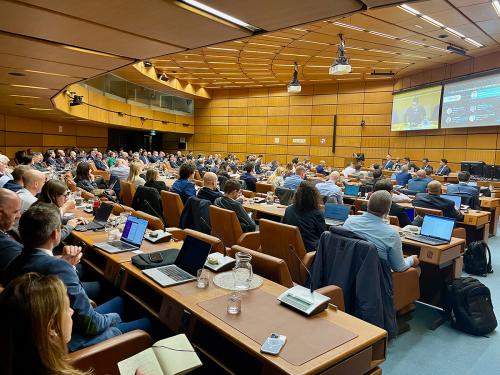Integrity Pacts – safeguarding EU funds
Last month, I had the pleasure of attending and speaking at the conference “Integrity Pacts – Safeguarding EU Funds” in Brussels, hosted by Transparency International (TI) and with the participation of the European Commission. The conference was held in the context of a pilot project recently launched by the Commission - "Integrity Pacts - Civil Control Mechanism for Safeguarding EU Funds" – which will explore the applicability of Integrity Pacts to EU Structural and Cohesion Funds through a number of pilot projects. The results and lessons learned from these pilot projects will then be shared and disseminated at EU level.
The conference on 5 May brought together over 100 representatives from civil society, as well as from EU funds managing authorities in Member States and EU institutions, with speakers from EU institutions, TI chapters across Europe, and other European civil society organisations. The morning session outlined some of the main corruption risks in public procurement, before introducing other civil society monitoring mechanisms in public procurement projects. The second half of the conference explored the Integrity Pact in depth, while also presenting a number of case studies and shared experiences from the perspectives of a variety of stakeholders. Presentations from all of the conference speakers are available on the website of Transparency International EU Office.
HLRM and Integrity Pacts
It was in this context of the morning session on civil society monitoring mechanisms in public procurement that I presented the High Level Reporting Mechanism (HLRM) as a tool to address bribery solicitation.
The concept of the HLRM was developed by the Basel Institute on Governance, OECD and Transparency International, together with a group of international companies seeking alternatives to slower judicial processes. Though not a legal mechanism, the HLRM functions in complement to law enforcement institutions. It aims to provide a constructive approach for companies and governments through the development of an in-country process for receiving, assessing, and quickly resolving complaints from companies affected by bribe requests in their dealings with officials at the level of administrative processes or specific public projects. Its primary purpose is thus to provide an early point of recourse to companies to address their concerns and prescribe a ‘quick fix’ before they lead to preventable harm.
Despite the differences between the two models, the HLRM and the Integrity Pact can in fact complement one another towards promoting good governance in public procurement. This is currently the case in Colombia, which is implementing an HLRM in the context of a roads infrastructure project. All pre-selected bidding companies are required to sign an Integrity Pact in addition to acknowledging the availability of the reporting mechanism in cases of irregularities. This combination of the HLRM and Integrity Pact may be an area for further study and application in certain contexts.
Call for proposals for the Pilot
Transparency International has championed Integrity Pacts since the 1990s as a mechanism to improve, transparency, accountability and to promote good governance in public procurement. Though widely used already throughout the world in various contexts, Integrity Pacts have until now seen limited use in the context of EU Structural Funds. In this regard, the introduction of Integrity Pacts looks to be a promising initiative.
With a 2014-2020 financial allocation for regional and cohesion policy at over EUR 350 billion – a third of the overall EU budget – it is imperative that these funds are managed with integrity and free of corruption.



